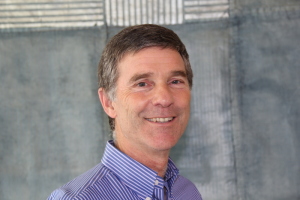2015 Economic Forecast
Posted by Steve Snodgrass on Mar 18, 2015
 Economic forecasters, like those who predict the weather, have a long history of being wrong. Like the weather, we’d all like to anticipate what the economic future will look like, but conflicting economic data and confounding economic events make forecasts difficult to rely upon.
Economic forecasters, like those who predict the weather, have a long history of being wrong. Like the weather, we’d all like to anticipate what the economic future will look like, but conflicting economic data and confounding economic events make forecasts difficult to rely upon.
A negative event occurs that would logically seem to depress the stock market but results in triple digit gains, or a positive happening has the exact opposite effect. So take that as a warning – just like the weather, when it comes to economic predictions there are no guarantees.
Two Big Questions on the Economy
When will interest rates rise, and when will inflation reappear? The answers to these two questions are intertwined, since the Federal Reserve will raise interest rates to control inflation. Current interest rates are at historically low levels, so if you have not already restructured long term debt to lock in low rates, it is strongly recommended that you do so.
The inherent cost of funds in capital and operating leases are low as well, and those who are unable to refinance debt or to take advantage of low bank rates should consider three to five year operating leases to fund equipment purchases. Operating leases have the benefit of being “off balance sheet” financing and therefore the only effect on financial statements is a current year lease expense. Leasing companies will often offer a forward interest rate lock. For example, if you are planning to acquire equipment in April of 2015, you can lock in today’s low rates now.
Many manufacturers have an association with a leasing company that can provide these favorable rates. A further advantage of this strategy is that the earnings generated by the equipment will more evenly match the repayment schedule.
The Federal Reserve refers to future rate increases as “lift off.” This term seems a bit ominous - the implication is that when rates do begin to rise they will “lift off” like a Saturn 5 rocket. Quantitative easing is anticipated to end soon, and some economists continue to forecast low rates through the first quarter of 2015, while others forecast continued low rates for the entire year.
According to the Commerce Department, inflation continues to muddle around 2-3%. The Fed has pumped up the money supply significantly; increased supply is necessary to stimulate the economy but can have the effect of triggering inflation. Most economists are not overly concerned about inflation for the next few years, but storm clouds are on the horizon. Current thinking is that inflation will begin to rise in 2017-2019. One measure of pending inflation is wage pressure, but most economic surveys indicate that wage pressure is not currently an issue. Anecdotally, in our markets we appear to be seeing wage pressure as we attempt to hire qualified team members.
Historically, the Fed has been slow to raise interest rates in reaction to inflation, but when inflationary pressures are prevalent, the Fed has been known to raise interest rates precipitately. So although the sun is now shining, a storm is brewing, and we need to be ready for “lift off” arriving between in 2017 and 2019.
Microclimates
Our regional economy can be seen as comparable to the microclimates of the North/Central California region. Your situation depends greatly upon the neighborhood you are in.
Commercial construction in the San Jose to San Francisco corridor is hot. Tech firms continue to build campuses, and large projects such as the Apple Spaceship are in full swing, and multi-dwelling housing is currently in vogue as rents continue to escalate. But Caltrans has exhausted its bond funding, and public projects of significant consequence have been scarce. Good news on the horizon is that Caltrans has indicated funding will increase in 2015 in Districts 4 and 5.
The Monterey Bay region is a different story altogether, with water scarcity stalling growth. Monterey County has been ordered to reduce pumping water out of the Carmel River by 70% by the end of 2016. Desalination plants continue to be proposed as a solution but conflicting interests thwart progress.
Residential construction of large subdivisions is virtually non-existent - the first question asked is, “Where will the water come from?” There is some growth in commercial construction, with a new VA Hospital and large theatre project in Marina, and a large condominium/hotel project in Seaside that could break ground in 2015.
In South Santa Clara and San Benito Counties the sun is beginning to break through the clouds. Several large housing developments have broken ground, and with Bay Area rent pressures, outlying areas should begin to see growth. Developments are appearing in Gilroy and Hollister, and rumors are swirling of pending agricultural processing expansions.
Much like forecasting the weather, when it comes to the economy, the only certainty is uncertainty. Yet 2015 should be similar to 2014, with pockets of sunshine and pockets of rain and fog. So depending on whether you are an optimist or a pessimist, the forecast is either partly sunny or partly cloudy.
Back to all Blogs
